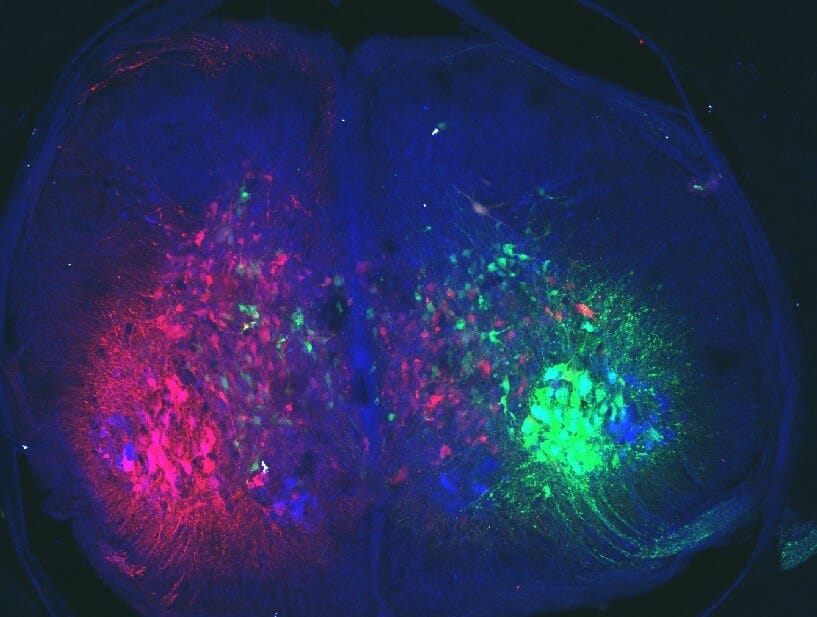The researchers mapped the birds' neural network, which controls the coordinated movement of the wings. They found that the evolutionary basis for the development of the coordinated and uniform flapping ability of the wings in birds was created thanks to a natural mutation that developed in a guiding gene, which caused the development of a unique neural network

What is the mechanism that gives birds the ability to fly and how did it develop during evolution? How did the birds manage to adapt to themselves one and familiar aerial movement - flapping two wings together? To move in space, on the ground, in water or in the air, you need a dedicated organ and a motor. Thus, similar to a car that needs wheels and an engine to drive, so for example humans need a dedicated organ - legs, and an engine that activates the movement of the legs. The motor that moves the limbs consists of a network of nerve cells located in the spinal cord. In animals that walk on two or four such as cats and mice, the motor activates a pattern of walking - from left to right to left and God forbid. Walking is done with the front and back legs. Humans even wave their hands while walking fast or running in accordance with the movement of their legs - a movement that helps them move quickly through space. If you try to run with your hands moving quickly in the same way, together, and try to "fly" like a bird, you will probably get confused and fall, or at least you won't be able to run fast.

The way birds move is fundamentally different from the movement of most reptiles and mammals, even though birds evolved from walking animals - reptiles and dinosaurs. When flying, birds move their wings together while the legs are fixed. When walking on the ground, most birds walk on their two legs, similar to humans, from left to right, with the wings fixed. In order to fly, a special organ developed in birds - the wings, and in addition the engine that activates the movement of the wings has changed, it activates a flapping movement of both wings together, unlike the alternating activation of the limbs in walking animals or, as mentioned, when humans run.
The gene regulates walking in mammals
Studies done on quadrupedal mammals - cats, rats and mice - from the beginning of the 20th century, showed that the neural motor that generates gait activates a leg on one side of the body, in coordination with the silencing of leg activity on the opposite side of the body. This activation or silencing activity is conditioned by the way nerve cells in the spinal cord are networked. During embryonic development, the nerve extensions, called axons, grow in a genetically programmed manner to their intended targets. The guidance molecules, which act as waypoints in the growth pathway, steer the axons to their destinations. The importance of guidance molecules in building the normal network was previously demonstrated in a groundbreaking study by neurobiologist Prof. Reudiger Klien from the German Max Planck Institute, in which it was demonstrated that a mutation in the guidance molecule ephrin-B3 changes the way mice walk from walking to jumping. A deficiency in the molecule caused a sort of short in the motor's neural network, and his movement changed from walking to moving his legs together.
In a new study published in the prestigious journal Science Advances, the result of a collaboration between a research group led by Prof. Avihu Keller from the School of Medicine of the Hebrew University and Prof. Claudio Mello from the University of Oregon in Portland, funded by the Israel-USA Binational Foundation, The researchers hypothesized that it is possible that the loss of activity of the same molecular marker through ephrin-B3 in birds, caused the development of a new neural network, which spans the coordinated movement of the wings. The doctoral thesis of the first author, Dr. Baruch Haimson, with the participation of research students Reut Sudkewitz, Oren Meir and research colleague Dr. Jared Alberg from the Hebrew University, focused on characterizing the activity of the avian protein and studying the network structure of the neural motor in the spinal cord of chicken embryos. An examination of the genome sequence of many birds showed that the gene encoding the guidance molecule ephrin-B3 is fundamentally different from the gene of reptiles and mammals, in a way that eliminates its activity as a road marker. In some birds, such as a chicken and his own, the gene is completely missing. A careful anatomical comparison of the neural network in the spinal cord between chicken embryos and mouse embryos showed that the density of the nerve cells in the spinal cord of the wing area (uniform movement) is similar to that of a mouse with a mutation in the gene encoding ephrin-B3 that walks in a jumping pattern (uniform limb movement). These findings strengthen the assumption that changes, during evolution, in the structure of the gene encoding the guidance molecule, caused the development of a neural network that activates the well-known coordinated movement model of flapping the wings.
A mouse or a chicken?
To test this hypothesis, the researchers "returned" the missing gene - ephrin-B3 to chicken embryos. Genetic insertion of the original gene of murine origin, directly into the spinal cord of the chicken, caused an anatomical change in the neural network in the spinal cord of the chicken embryos. The retina has changed to a retina similar to that of a normal mouse, supporting walking rather than wing movement. And how did the chicks' wings move after hatching? Future studies in the laboratory, which require the development of new genetic tools, are aimed at solving and deciphering this fascinating question.
Intuitively, the way new features are acquired is by acquiring new tools that did not exist before. For example, the wings of birds evolved by the lengthening of the upper limbs and the development of long feathers. In this study, the researchers showed that the acquisition of a new feature - the way the wings move by birds occurred in evolution by losing the activity of a protein. A possible explanation is that the ability to move the limbs together also exists in animals that walk, and for sight - if we want we can move. Fortunately, the neural network that controls walking is more dominant, and as long as it is not damaged, humans will not have to find themselves jumping all day instead of walking.
Prof. Keller concludes: "The research raises many questions concerning the diverse mode of movement of birds and other animals, among them - how do birds combine flight with walking? Why did the loss of ephrin-B3 protein activity not affect the walking ability of birds? Why do some birds move on the ground in jumps like sparrows? Did a similar mechanism develop in bats or jumping animals such as the kangaroo? We hope that further studies to be carried out in the future will be able to answer these questions".
More of the topic in Hayadan:

2 תגובות
Shouldn't it be worth checking the genes that activate the kangaroo movement? Or the grasshoppers?
I think the researchers should ask the drummers how it is possible to practice everything from good practice.
My opinion is that these abilities are learned and not innate.